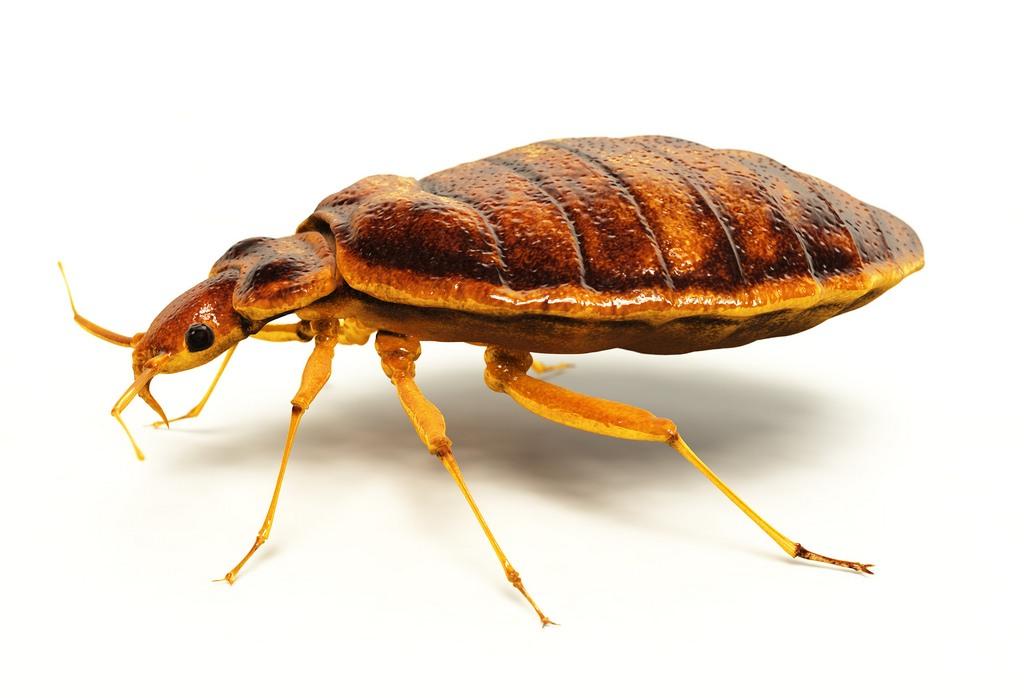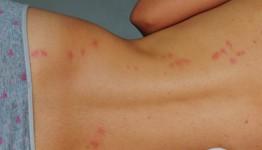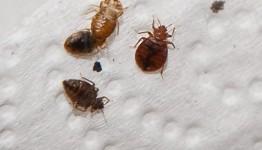 In order to prevent the spread of bed bugs, it’s important to understand how they reproduce. Bedbugs reproduce via hypodermic insemination, also known as traumatic insemination. Male bugs use their genitalia to pierce the females anywhere on the abdomen, releasing sperm into the body. The sperm migrate through her abdominal fluiduntil they arrive at the ovaries, resulting in fertilization of the eggs.
In order to prevent the spread of bed bugs, it’s important to understand how they reproduce. Bedbugs reproduce via hypodermic insemination, also known as traumatic insemination. Male bugs use their genitalia to pierce the females anywhere on the abdomen, releasing sperm into the body. The sperm migrate through her abdominal fluiduntil they arrive at the ovaries, resulting in fertilization of the eggs.
The mating process is traumatic for female bed bugs, and they are frequently injured in the process. The wound can result in infection and leakage of blood, which reduces the lifespan of the female. For this reason, female bugs will avoid excessive mating where possible. After mating, they prefer to move to a location where they can remain undisturbed with a guaranteed food supply. In a safe environment, a female bed bug will typically lay between one to seven eggs each day, following each blood meal.
Bed bugs generally live for 12 to 18 months. During her lifetime, a female bed bug will lay up to 250 eggs. The milky-white eggs are roughly one millimeter long, and visible to the naked eye.The eggs are deposited in crevices and cracks on bed frames, baseboards, furniture and carpets. The female uses an adhesive layer to ensure the eggs remain in place.
Because mating results in scarring, females that have mated many times within a short period of time will produce fewer eggs. Females that have time to recover from the mating process will produce more eggs. This phenomenon helps increase the proliferation of bed bugs, because pregnant females will travel to new locations to avoid male bugs.
Eggs hatch within 1-2 weeks. The nymphs that emerge can feed on blood immediately, but are unable to reproduce until they have fully matured. Theyundergo five molting stages before reaching adulthood. During each stage they must feed at least once. The time taken to mature depends on the temperature – from three weeks in warm weather to four months in cold weather.
A female bed bug may mate with any of her adult offspring, and will lay eggs continuously assuming she has access to a blood meal. Thismeans a single pregnant female can easilycreate an infestation of five thousand bugs within six months.
A 2010 study discovered that bed bug nymphs release a pheromone that prevents males from attempting to mate with them. Scientists hope to eventually use this pheromone to disrupt bed bug reproduction and reduce infestations.
If you really want to get rid of bed bugs today try SayByeBugs! It was developed as a safe and highly effective alternative among a sea of products that rarely deliver on their promises.








